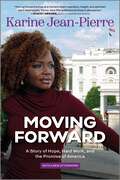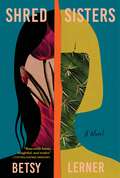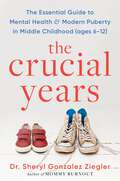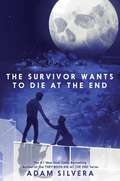- Table View
- List View
Veterans, Prescription Opioids and Benzodiazepines, and Mortality, 2007-2019: Three Target Trial Emulations
by National Academies of Sciences, Engineering, and Medicine Health and Medicine Division Board on Population Health and Public Health Practice Committee on Evaluating the Effects of Opioids and Benzodiazepines on All-Cause Mortality in VeteransVeterans are more likely than non-veterans to experience pain, trauma, and mental health challenges due to training and combat-related service. Treatment often results in the prescription of opioid and benzodiazepine medications. In 2024, the National Academies were tasked with convening a committee of experts to evaluate the effects of these medications on all-cause mortality of veterans, including suicide, regardless of whether information relating to such deaths was reported to the U.S. Centers for Disease Control and Prevention. The resulting report examines newly dispensed opioid pharmacotherapy in veterans without and with current benzodiazepine pharmacotherapy; varying levels of the initial baseline dosage and dosage escalation of dispensed opioid pharmacotherapy; and newly dispensed benzodiazepine compared to alternative non-benzodiazepine pharmacotherapy in veterans with consistent opioid pharmacotherapy.
Examining Prosecution: Proceedings of a Workshop
by National Academies of Sciences, Engineering, and Medicine Division of Behavioral and Social Sciences and Education Committee on Law and JusticeThe National Academies of Sciences, Engineering, and Medicine Committee on Law and Justice hosted a two-day workshop on September 24-25, 2024 to explore models of prosecutorial programs and practices, implications for public policy, and priorities for future research. The workshop showcased practices, programs, and policies that offer promising alternatives to incarceration and promoted continuous quality improvement and accountability within prosecutors’ offices.This proceedings summarizes the workshop themes, including pressing challenges and opportunities, and areas for further consideration and guidance.
Equity in K-12 STEM Education: Framing Decisions for the Future
by National Academies of Sciences, Engineering, and Medicine Division of Behavioral and Social Sciences and Education Board on Science Education Committee on Equity in PreK-12 STEM EducationScience, technology, engineering, and mathematics (STEM) live in the American imagination as promising tools for solving pressing global challenges and enhancing quality of life. Despite the importance of the STEM disciplines in the landscape of U.S. political, economic, and social priorities, STEM learning opportunities are unevenly distributed, and the experiences an individual has in STEM education are likely to vary tremendously based on their race, ethnicity, socio-economic class, gender, and a myriad of other factors. Equity in K-12 STEM Education: Framing Decisions for the Future approaches equity in STEM education not as a singular goal but as an ongoing process that requires intentional decision-making and action toward addressing and disrupting existing inequities and envisioning a more just future. Stakeholders at all levels of the education system - including state, district, and school leaders and classroom teachers - have roles as decision-makers who can advance equity. This consensus study report provides five equity frames as a guide to help decision-makers articulate short- and long-term goals for equity and make decisions about policy and practice.
Bridge Construction Inspection Training Resources and Practices
by National Academies of Sciences, Engineering, and Medicine Transportation Research Board National Cooperative Highway Research Program Roy E. Sturgill Jr. Christofer M. Harper Daniel TranBridge construction inspection is a critical component in fulfilling the mission of state departments of transportation (DOTs) and the U.S. Federal Highway Administration to deliver high-performing transportation systems that adhere to or surpass specified quality standards. NCHRP Synthesis 649: Bridge Construction Inspection Training: Resources and Practices, from TRB’s National Cooperative Highway Research Program, collects resources and documents practices used by state DOTs in training and setting qualifications of the bridge construction inspection workforce.
Geospatial Data Governance Policies and Procedures: A Guide
by National Academies of Sciences, Engineering, and Medicine Transportation Research Board Airport Cooperative Research Program Rick Adams Cindy Baldwin Laith Alfaqih Thomas Tiner Randy Murphy Elliot Rosales Kevin Shirer Carol Zuber-Mallison Ryan E. Bowe Eric RisnerMost airports, whether they realize it or not, use geospatial data. Traditionally, spatial data has been documented on paper to identify airport assets; as technology has progressed, information on spatial data has become more accurate. Today, geospatial software systems, such as geographic information systems, computer-aided design, and building information modeling, make acquiring and maintaining geospatial data easier. ACRP Research Report 278: Geospatial Data Governance Policies and Procedures: A Guide, from TRB’s Airport Cooperative Research Program, provides guidance to airport operators on how to create a data governance strategy for airports and stakeholders, including roles and responsibilities, policies, data collection standards, procedures, data exchange, security, and maintenance.
Practices and Standards for Plugging Orphaned and Abandoned Hydrocarbon Wells: Proceedings of a Workshop
by National Academies of Sciences, Engineering, and Medicine Division on Engineering and Physical Sciences Division on Earth and Life Studies Board on Infrastructure and the Constructed Environment Board on Earth Sciences and ResourcesWhen oil and gas production began in the 19th century in North America, standards and regulations for the drilling and plugging of wells had not yet been developed. Over time, many of these and other wells were abandoned - unplugged, or not plugged to modern standards, and have sat idle for an extended, possibly unknown, period of time. These wells might not have been originally operated and maintained in accordance with existing statutes and regulations and, due to degradation over time and potential improper prior operations, they can emit methane, contaminate groundwater, and impact ecosystems, creating risks for both the environment and the public. To explore and share the variety of existing procedures and standards for plugging orphaned and abandoned wells, including current best practices for well-plugging technologies, the National Academies of Sciences, Engineering, and Medicine convened a workshop on July 18-19, 2024. Sponsored by the Department of the Interior's Orphaned Wells Program Office, the workshop included members of the federal government, state leaders, tribal representatives, industry experts, and other affected parties. This proceedings summarizes the presentation and discussion of the workshop.
Macroeconomic Implications for Decarbonization Policies and Actions: Proceedings of a Workshop
by National Academies of Sciences, Engineering, and Medicine Division on Engineering and Physical Sciences Division of Behavioral and Social Sciences and Education Division on Earth and Life Studies Board on Energy and Environmental Systems Board on Environmental Change and Society Board on Atmospheric Sciences and Climate Roundtable on Macroeconomics and Climate-related Risk and OpportunitiesDecarbonization brings both risks and opportunities to the macroeconomy. Achieving net-zero emissions by mid-century may involve sweeping changes in technologies, policies, and systems, and the ways in which these changes are implemented may have profound impacts on communities, industries, economies, and nations. To elucidate multiple aspects of the ways in which decarbonization and the macroeconomy interact, the National Academies of Sciences, Engineering, and Medicine, under the auspices of the Roundtable on Macroeconomics and Climate-related Risks and Opportunities, convened a workshop on September 12-13, 2024. In panel discussions, an interactive breakout session, and a poster session, participants explored emerging insights on the macroeconomic and socioeconomic implications of decarbonization strategies and lessons learned from engagement with communities, industries, and governments around decarbonization pathways. This publication summarizes the presentations and discussion of the workshop.
Design, Construction, and Monitoring Practices for Aquatic Organism Passage
by National Academies of Sciences, Engineering, and Medicine Transportation Research Board National Cooperative Highway Research Program Roger Kilgore Casey Kramer Karmyn Pasquariello Robert Wachter III Justin LennonAquatic organism passage (AOP) water crossing design is an evolving field at the nexus of the built environment and the natural world. When successful, AOP water crossings provide sustainable transportation infrastructure and environmental benefits via connected habitats for fish and other aquatic organisms. NCHRP Synthesis 646: Design, Construction, and Monitoring Practices for Aquatic Organism Passage, from TRB’s National Cooperative Highway Research Program, documents current practices of state departments of transportation in the design, construction, and monitoring of AOP water crossing structures.
Roundtable on Obesity Solutions 10th Anniversary: Looking Back, Moving Forward: Proceedings of a Symposium
by National Academies of Sciences, Engineering, and Medicine Food and Nutrition Board Roundtable on Obesity SolutionsIn July 2024, the National Academies Roundtable on Obesity Solutions hosted a symposium to honor its 10th anniversary and discuss its next decade. Speakers considered the Roundtable’s history of informing obesity research, policy, and practice. The event explored major developments toward prevention, treatment, and management of obesity, as well as ideas for meeting future challenges.
Programs to Expand the Skilled, Technical Transportation Workforce: Proceedings of a Workshop
by National Academies of Sciences, Engineering, and Medicine Division of Behavioral and Social Sciences and Education Policy and Global Affairs Transportation Research Board Board on Human-Systems Integration Committee on Women in Science, Engineering, and Medicine Consensus and Advisory Studies DivisionPrograms to Expand the Skilled, Technical Transportation Workforce: Proceedings of a Workshop summarizes the Workshop to Broaden the Diversity of the Skilled, Technical Transportation Workforce held in September 2024 at the National Academies of Sciences Building in Washington, DC. The workshop was sponsored by the Federal Transit Administration and the National Science Foundation and brought together experts and educators across academia, government, and industry.
Accommodating Federal Agencies at Airports and Related Contractual Concerns
by National Academies of Sciences, Engineering, and Medicine Transportation Research Board Airport Cooperative Research Program Margaret Martin Sean CussonAirports host multiple federal agencies that play key roles in the operations, safety, and security of their facilities. Planning and operation of airports across the United States may require accommodation of multiple federal agencies, but the legal authority defining airports’ rights and obligations to these agencies is varied and at times unclear. ACRP Legal Research Digest 47: Accommodating Federal Agencies at Airports and Related Contractual Concerns, from TRB’s Airport Cooperative Research Program, seeks to provide a single source of information concerning airports’ rights and obligations to accommodate federal agencies and to enter into cooperative agreements and other agreements.
A Vision for Continental-Scale Biology: Research Across Multiple Scales
by National Academies of Sciences, Engineering, and Medicine Division on Earth and Life Studies Board on Life Sciences Board on Environmental Studies and Toxicology Committee on Research at Multiple Scales: A Vision for Continental Scale BiologyOur planet is facing many complex environmental challenges, including the loss of biodiversity and rapidly changing climate conditions, driven by intensifying human-nature interactions worldwide. Dramatic advances in the biological sciences over recent years are made possible by new tools to study life at many scales, from identifying mutations in a single gene to monitoring changes in plants, animals, and microbes over an entire continent. These tools have the potential to usher in a new era of continental-scale biology (CSB) in which researchers can combine data from various realms across organizational, spatial, and temporal scales, addressing questions on biological processes and patterns that cannot be answered by observations at either small or large scales alone. This report, prepared at the request of the National Science Foundation, sets out a vision for the development of CSB and identifies the research areas that could most benefit from multi-scale approaches. Advancing the use of CSB to address a wide range of biological and societal challenges will require the development of integrated conceptual frameworks and theories to guide research, deployment of emerging technologies, and development of a skilled workforce to synthesize the vast amounts of data from various sources.
Airport Parking Reservation Systems and Techniques
by National Academies of Sciences, Engineering, and Medicine Transportation Research Board Airport Cooperative Research Program Adrian Leung Stephen D. Van BeekAirport parking is an important customer amenity and a principal source of revenue that helps fund the operation and development of airports. In recent years, growing volumes of passenger traffic and increasing competition from a variety of airport access providers have encouraged airports to seek new ways to attract airport parkers and enhance revenues, which may include implementing an online booking system. ACRP Synthesis 140: Airport Parking Reservation Systems and Techniques, from TRB’s Airport Cooperative Research Program, documents the use of online booking systems at U.S. airports, including their benefits, costs, and implementation challenges.
Examples of Technical Innovation for Traumatic Brain Injury Prevention, Diagnosis, and Care: Proceedings of a Workshop
by National Academies of Sciences, Engineering, and Medicine Health and Medicine Division Board on Health Sciences Policy Forum on Traumatic Brain InjuryDespite traumatic brain injury (TBI) being a leading cause of morbidity and mortality in the U.S., substantial unmet needs persist in TBI prevention, diagnosis, treatment, and recovery. The National Academies Forum on Traumatic Brain Injury hosted a public workshop in April 2024 to explore examples of recent research, development, and implementation of TBI diagnostic biomarkers, injury prevention technologies, clinical decision tools, and treatment approaches. Discussions explored examples of needs, opportunities, and challenges influencing innovation.
Background and Resources for the Design and Construction of Bonded and Unbonded Post-Tensioned Concrete Bridge Elements
by National Academies of Sciences, Engineering, and Medicine Transportation Research Board National Cooperative Highway Research Program Jesus Muro Villanueva Andrew D. Mish Maria Lopez de Murphy Thomas P. Murphy Mi Jin Jung Pinar Okumus David S. Derks Mason B. Rhodes Sarah K. Bowlin Christopher S. Williams Robert J. FroschNCHRP Web-Only Document 417: Background and Resources for the Design and Construction of Bonded and Unbonded Post-Tensioned Concrete Bridge Elements, from TRB’s National Cooperative Highway Research Program, is a supplement to NCHRP Research Report 1139: Considerations for the Design and Construction of Bonded and Unbonded Post-Tensioned Concrete Bridge Elements.
Wide Cracks and Joints in Flexible and Composite Pavements: State DOT Maintenance Practices
by National Academies of Sciences, Engineering, and Medicine Transportation Research Board National Cooperative Highway Research Program David PeshkinThe repair of transverse cracks and longitudinal paving joints and cracks in asphalt and asphalt-surfaced pavements is a common maintenance activity for state departments of transportation (DOTs). One of the limitations of crack sealing and filling, however, is the width of the crack for which these repairs are successful. NCHRP Synthesis 640: Wide Cracks and Joints in Flexible and Composite Pavements: State DOT Maintenance Practices, from TRB’s National Cooperative Highway Research Program, documents practices used by state DOTs for flexible and composite pavement maintenance for wide transverse and longitudinal cracks and joints.
Outcomes of Variability in Teen Driving Experience and Exposure: Evidence from Naturalistic Driving Studies
by National Academies of Sciences, Engineering, and Medicine Transportation Research Board Behavioral Traffic Safety Cooperative Research Program Tia Mastromatto Loren Staplin Michelle Duren Johnathon Ehsani Feng Guo Shu Han Lesheng Hua Sheila KlauerMotor vehicle crash rates for teen drivers during the learner’s permit phase are relatively low and comparable to those of adult drivers. However, once teenagers begin driving independently, the crash risk increases significantly at licensure and remains high during the first few months of solo driving. BTSCRP Research Report 13: Outcomes of Variability in Teen Driving Experience and Exposure: Evidence from Naturalistic Driving Studies, from TRB’s Behavioral Traffic Safety Cooperative Research Program, provides insights on how exposure to driving during the learner’s permit period and the first months of driving independently, including driving in diverse environments, impacts safety outcomes in later driving.
Safety Evaluation of On-Street Bicycle Facility Design Features
by National Academies of Sciences, Engineering, and Medicine Transportation Research Board National Cooperative Highway Research Program Jessica Schoner Rebecca Sanders Nathan McNeil Sirisha Kothuri Christopher Monsere Stefanie Brodie Clay Sublett Tyler Wong Jeremy Chrzan Dylan Passmore Bill Schultheiss Katy Sawyer Michael Hintze Shawn Turner Boya Dai Richard Dzinyela Okan Gurbuz Karen Dixon Bahar DadashovaBicycling is an ideal mode of transport for short- and medium-distance trips that has many health and environmental benefits. However, bicycling was not considered a mainstream mode of transport and was excluded from travel and transport surveys until recent decades. NCHRP Web-Only Document 414: Safety Evaluation of On-Street Bicycle Facility Design Features, from TRB's National Cooperative Highway Research Program, is designed to help state departments of transportation and other transportation agencies deploy safer bicycle facilities and is supplemental to NCHRP Research Report 1136: On-Street Bicycle Facility Design Features: A Guide.
Preventing and Treating Dementia: Research Priorities to Accelerate Progress
by National Academies of Sciences, Engineering, and Medicine Health and Medicine Division Division of Behavioral and Social Sciences and Education Board on Health Sciences Policy Board on Behavioral, Cognitive, and Sensory Sciences Committee on Research Priorities for Preventing and Treating Alzheimer’s Disease and Related DementiasAlzheimer’s disease and related dementias (AD/ADRD), a collection of neurodegenerative conditions, take a heavy physical, emotional, and financial toll on individuals, families, and communities. Developing effective strategies for preventing and treating these conditions, which impact millions of people in the United States, is one of the most pressing needs in biomedical research today. The National Institutes of Health has invested billions of dollars in this research, which has led to numerous scientific advances over the last decade. However, the pace of progress has not kept up with the growing needs of people living with AD/ADRD and those at risk. Consequently, the National Institute on Aging and the National Institute of Neurological Disorders and Stroke asked the National Academies to convene an expert committee to examine and assess the current state of biomedical research and recommend research priorities to advance the prevention and treatment of AD/ADRD. Preventing and Treating Dementia outlines these research priorities and recommends strategies to overcome barriers to progress.
Tactile Wayfinding in Transportation Settings for Travelers Who Are Blind or Visually Impaired: Volume 1: Conduct of Research
by National Academies of Sciences, Engineering, and Medicine Transportation Research Board Transit Cooperative Research Program Mark Walker Sarah Brown Paul Ryus Lee Rodegerdts Bastian Schroeder Jennifer Graham Linda Myers Billie Beezy" Bentzen Alan C. Scott Bo Lan Alyson West Sarah Worth O'BrienTravelers who are blind or visually impaired use a variety of cues and strategies to orient themselves within their surroundings and move through space to where they want to go. This wayfinding process can be particularly challenging in complex urban environments where some cues, such as detectable edge treatments, the sound of surging parallel traffic, or other indicators may be inconsistent, confusing, misleading, or missing. TCRP Research Report 248: Tactile Wayfinding in Transportation Settings for Travelers Who Are Blind or Visually Impaired, Volume 1: Conduct of Research, from TRB's Transit Cooperative Research Program, seeks to help provide consistency of tactile walking surface indicators and guidelines for their use in multimodal environments. There is a second volume to the report, titled TCRP Research Report 248: Tactile Wayfinding in Transportation Settings for Travelers Who Are Blind or Visually Impaired, Volume 2: Guide.
Moving Forward: A Story of Hope, Hard Work, and the Promise of America
by Karine Jean-Pierre&“Moving Forward arrives at a moment when inspiration, insight, and optimism are in short supply. Karine Jean-Pierre delivers all three in abundance.&” —Stacey Abrams, author of Lead from the Outside&“Karine Jean-Pierre illuminates her path to insider status so others can follow in her footsteps.&”—Essence&“Jean-Pierre inspires us to get involved in politics—every single one of us, no matter where we are from or who we are.&”—The AtlanticMost political origin stories have the same backbone. A bright young person starts reading the Washington Post in elementary school. She skips school to see a presidential candidate. In middle school she canvasses door-to-door. The story can be intimidating. It reinforces the feeling that politics is a closed system: if you weren&’t participating in debate club, the Young Democrats and Model UN you have no chance.Karine Jean-Pierre&’s story breaks the mold. In Moving Forward, she tells how she got involved, showing how politics can be accessible to anyone, no matter their background. In today&’s political climate, the need for all of us to participate has never been more crucial. This book is her call to arms for those who know that now is the time for us to act.
Welcome to Gothic
by Christina DoddNew York Times bestselling author Christina Dodd welcomes you to Gothic, California—the mysterious village with a foggy history—in this twisty, suspenseful, and darkly romantic novella… WELCOME TO THE PAST At the glittering heart of Hollywood&’s golden era stands the regal Gothic Palace Theater—the pinnacle of thrilling shows, opulent decor, and the biggest stars of stage and screen. Here, drama unfolds on and off the stage. WELCOME TO THE PRESENT Today, in the abandoned backstage, fitness guru Wendy Giordano is knocked unconscious and wakes to find herself performing a daredevil stunt in the Gothic Palace Theater…in glamorous 1940. WELCOME TO GOTHIC Wendy is swept into the hypnotic bygone world of desperate gamblers, powerful divas, and one tormented actor who might be her ideal man. Can she save a child and stop a murder before time once more sweeps her away from all she has come to love?
Shred Sisters: A Novel
by Betsy LernerNo one will love you more or hurt you more than a sister."I love this book. It moves like a souped-up pickup truck." - Patti Smith, author of Just Kids and M TrainFrom Betsy Lerner, celebrated author of The Bridge Ladies, comes a wry and riveting debut novel about family, mental illness, and a hard-won path between two sistersIt is said that when one person in a family is unstable, the whole family is destabilized. Meet the Shreds. Olivia is the sister in the spotlight until her stunning confidence becomes erratic and unpredictable, a hurricane leaving people wrecked in her wake. Younger sister Amy, cautious and studious to the core, believes in facts, proof, and the empirical world. None of that explains what's happening to Ollie, whose physical beauty and charisma mask the mental illness that will shatter Amy's carefully constructed life.As Amy comes of age and seeks to find her place-first in academics, then New York publishing, and through a series of troubled relationships-every step brings collisions with Ollie, who slips in and out of the Shred family without warning. Yet for all that threatens their sibling bond, Amy and Ollie cannot escape or deny the inextricable sister knot that binds them.Spanning two decades, Shred Sisters is an intimate and bittersweet story exploring the fierce complexities of sisterhood, mental health, loss and love. If anything is true it's what Amy learns on her road to self-acceptance: No one will love you more or hurt you more than a sister.
The Crucial Years: The Essential Guide to Mental Health and Modern Puberty in Middle Childhood (Ages 6-12)
by Dr. Sheryl Gonzalez ZieglerAn essential guide for parents and caregivers, this book offers insights, strategies, and understanding to navigate middle childhood (ages 6–12). Dr. Sheryl Gonzalez Ziegler, a seasoned clinical psychologist and mother, highlights ways to foster resilience, encourage open communication, and build lasting connections during this crucial period.There is a pivotal sea change happening in children’s development. The age of puberty has been trending earlier for decades, and now starts as young as 8 years old in girls and 9 in boys. Bullying doesn’t just happen on the playground, but over text and DM. Depression and anxiety are drastically on the rise. Couple earlier puberty with ill-equipped, developing brains and the onslaught of new media and stressors that never existed when we were kids, and it’s clear that parents need a new guide to raise this new generation.The Crucial Years is your essential handbook to navigating the often misunderstood and overlooked years of middle childhood (ages 6–12). As a mom and clinical psychologist, Dr. Sheryl Ziegler knows firsthand how challenging these years can be for some and for others how they are years where a parent thinks they can finally catch their breath in between the gap from preschool and middle school. Dr. Ziegler masterfully unlocks the enigma surrounding modern puberty and offers evidence-based strategies, interventions, and answers to middle childhood’s most perplexing questions and concerns. In these pages, she provides:Science-based advice to recognize and navigate puberty.Candid and actionable guidance for getting your kids to talk about their complicated feelings and understanding their moods.Insights into the changing world of gender and sexual identity, body image and disordered eating.A clear explanation of the invisible threads linking mood swings, self-confidence, and social media exposure.Road-tested, real-world guidance to handle social stress and other pressures.With The Crucial Years, you have all that you need to guide your child through the unexpected ups and downs of puberty and help them emerge as well-rounded, confident teens.
The Survivor Wants to Die at the End (They Both Die at the End Series #3)
by Adam SilveraIn this third book of the USA Today and #1 New York Times mega-bestselling They Both Die at the End series, two strangers—each with their own complicated relationship to Death-Cast—help each other learn to live.Paz Dario stays up every night, waiting for the Death-Cast call that would mean he doesn’t have to keep faking his way through this lonely life. After a devastating day, Paz decides he’s done waiting around for Death-Cast. If they say he’s not dying, he’ll just have to prove them wrong. But right before Paz can die, a boy saves his life.Alano Rosa is heir to the Death-Cast empire that encourages everyone to live their best lives, but he doesn’t feel in control of his own existence thanks to his father. And with a violent organization called the Death Guard threatening Alano, his End Day might be closer than he thinks. It’s time to live.Fate brings Paz and Alano together, but it’s now up to the boys to survive the tragic trials ahead so no one dies at the end.This book contains themes that some readers may find difficult.





